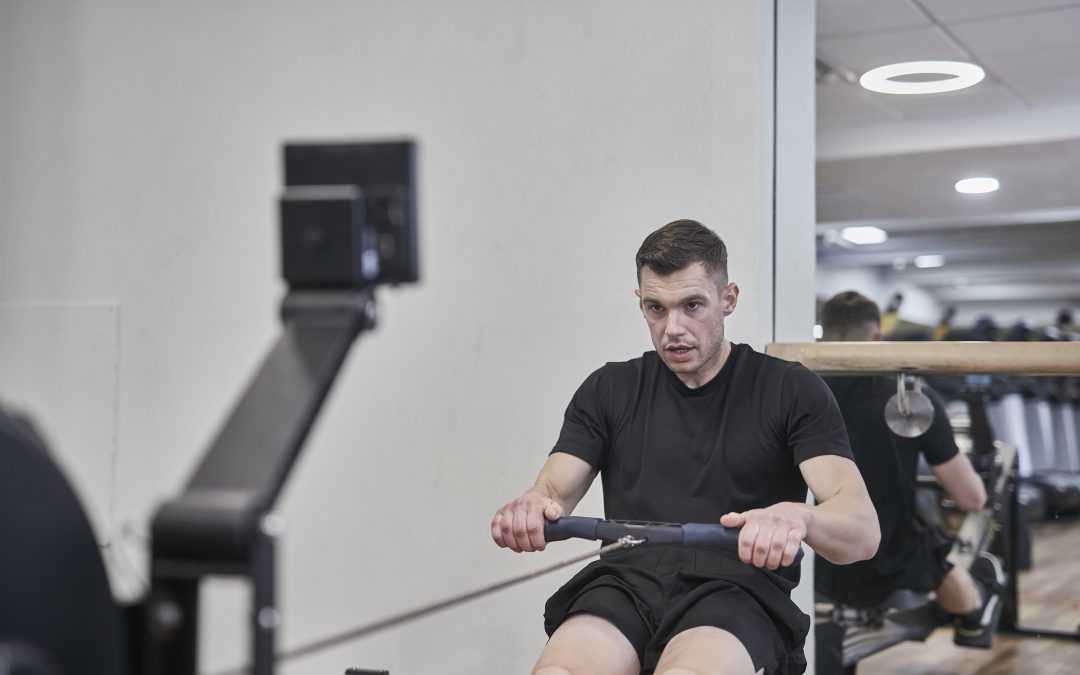What’s new for fitness in 2025? By this time next year, will we all be caught up in the hype of a new fitness activity or working out with AI training buddies? The predicted trends for 2025 might not be as radical as that, but there are some exciting developments just around the corner. Here’s what to expect from the leading fitness trends for 2025.
Wearable Technology
Wearable tech, or just “wearables” for those in the know, has been ranked as the #1 trend in trusted sources like the ACSM’s 2025 Worldwide Fitness Trends report. From their humble beginnings as step counters, wearables have evolved into sophisticated health monitors that give us real-time data on heart rate and HRV, sleep, stress, and more, empowering users with health and wellbeing insights.
What are the benefits?
They can be great for motivation, fine-tuning your fitness habits, and seeing progress over time. They can personalise your fitness journey by tailoring sleep, workouts, and other behaviours based on individual need. However, wearables sometimes come with a lot of information, which can lead to data overload for some users.
Who is this best for?
Tech-savvy individuals who love a data deep-dive and thrive on insights. If you love setting goals and watching your progress in real time, try a wearable in 2025.
How to get started
Decide what kind of data you want to monitor (wearables are so much more than just workout trackers these days). Start with a basic model to get a feel for wearable tech. Familiarise yourself with the features and gradually integrate it into your daily routine, using its data to fine-tune your workouts and recovery.
Training Apps
There’s an app for everything these days and chances are you use your phone as a mini computer. It’s no surprise that apps (for training, nutrition, and much more) emerged as a top trend in 2025 fitness trend predictions. Fitness apps are convenient, reactive, and can deliver a pretty personalised experience whether you train in a gym, at home, or even when traveling for work or leisure.
Benefits: Apps offer accessibility and flexibility, allowing you to train when, where, and how you want. They provide a wealth of workouts and tracking tools, and many have coaching support and community elements too.
Who is this best for: Best for busy individuals or those seeking guidance without relying on a coach or joining a club.
How to get started: Start by exploring apps that align with your existing interests or 2025 goals. Make full use of the support and tracking features to boost your commitment.
Fitness Competitions
2025 is a great year to try a new fitness challenge. The rise of fitness competitions like Hyrox and others that combine endurance, strength, and functional movements, are a great way to train for something different.
Benefits: Fitness competitions give you an exciting goal, and the balanced mix of cardio, strength, and functional will be great for your training.
Who is this best for: Competitive types, those who want to take their training up a notch, or perhaps older people who used to do multi-sport like triathlon and want a new challenge.
How to get started: Research fitness competitions or functional fitness events and take a look at what’s expected of you. Look at videos of previous events if possible. Tailor your training by integrating running and rowing with strength movements and functional fitness, and perhaps join a community group for support.
Fitness for Older Adults
Fitness isn’t just about looking great. More people are recognising its role in ageing well and staying independent in later life. As the population ages, fitness for older adults improves quality of life and tackles bigger issues around long term health. 2025 will see the rise of fitness tailored to older adults – and maybe that’s you?
Benefits: Expands the reach of “fitness” beyond young people and the gym, reaching older people who may traditionally have felt left out of the conversation.
Who is this best for: People in their 40s, 50s, 60s and beyond looking to boost their health and age with strength and independence.
How to get started: Find a PT, local group, or community activity that welcomes people of your age group. Don’t forget that resistance training comes into its own as you get older, helping maintain muscle mass and bone density.
Data-Driven Training Tech
Data-driven training – yes, AI! – is ushering in a new era of ultra personalised workouts and health recommendations. This trend incorporates AI-type technology and analytics, ideally with the support of a human, to design custom fitness experiences.
Benefits: Real-time analytics can make training safer and more efficient, so every workout helps you move towards specific goals rather than generic targets.
Who is this best for: Anyone who wants to enhance their training performance or health outcomes through precise insights.
How to get started: Experiment with fitness gadgets that provide advanced analytics. These might be wearables or tools offered by your gym.
Strength Training
2025 trends aren’t all about tech. Good old-fashioned strength training is still in the top 10 of trends, and that’s great news for our muscles, bones, health, and mental wellbeing. Traditional strength training never went away, but it’s enjoying a resurgence thanks to fitness competitions like Hyrox that include strength exercises.
Benefits: All kinds of resistance training strengthens muscles and bones, helps maintain healthy body weight, and can reduce the risk of many diseases.
Who is this best for: Everyone should be doing some kind of resistance training. There’s no age limit and it’s never too late to start.
How to get started: Find a good trainer who can help you find a form of resistance training that you love to do (it doesn’t have to be barbells). Learn good form before adding more load. Do it 2-3 times a week for best health benefits.
Influencer-Led Fitness
The viral aspect of influencer-led fitness programmes is helping workouts and fitness advice reach wider audiences. Social media allows fitness influencers to share routines and create powerful online communities. But it’s always on us as end users to check facts.
Benefits: A variety of workouts with added community motivation. However, the lack of personalised attention can be a downside.
Who is this best for: Regular social media users and those seeking community-driven workouts.
How to get started: Follow trusted fitness influencers and engage with their content – but don’t try to do too many different things at once.
High-Intensity Interval Training (HIIT)
HIIT continues to attract those looking to break a sweat fast with maximum results. Known for its time-efficient workouts, HIIT will remain an integral part of the 2025 fitness scene.
Benefits: Quick and effective sessions that work for weight management, fitness building, and endurance. But high intensity isn’t right for everyone and nobody should do HIIT all the time.
Who is this best for: Time-strapped people and advanced exercisers ready to challenge themselves.
How to get started: Find a HIIT routine that has exercises you’re comfortable with and slowly increase the pace, duration, or intensity as you get fitter.
Exercise for Mental Health
With mental wellbeing still centre stage in 2025, we’ll all be talking more about how exercise can improve and support good mental health.
Benefits: Physical activity boosts mood, provides stress relief, and can improve self-confidence. There’s essentially no downside to this physical and mental health tool.
Who is this best for: Anyone looking for holistic wellness that incorporates physical, mental, and emotional wellbeing.
How to get started: Incorporate mindfulness into your physical routines through yoga or nature walks, focusing on the physical and mental benefits of movement.
In Conclusion
2025 promises to bring exciting advancements and innovations to the fitness world. From wearable tech and data-driven training to the continued emphasis on mental health and strength training, fitness will become more personalised, accessible, and effective.



